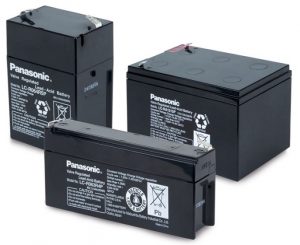Our message board recently had a great discussion about how to properly size a battery when operating remote.
Robert W9RKK asked:
I’m looking to buy a deep cycle battery for SARC in the Park. What kind of ampere hour rating would be sufficient? I have an Elecraft K3.

Rob N9MVO replied:
The question is: How much power do you want to run? A good way to start is to assume <50% efficiency, so double the transmit power, and add some to it. Also, assume 100% transmit time. Since you don’t actually transmit that much, you actually have more running time than you expect. Finally, recognize that you cannot suck the battery dry. Add 30% to the battery capacity to be able to operate without completely exhausting the battery.
If you are going to run low power, e.g. 25 W, you can expect the radio to draw about 5 A, key down. If you are there from 8:00 ’till noon, you need 20 AH. Add 30%, and you could use a 26 AH battery. If you want to run 100 W, the rig will draw about 20 A. For that, you should have a 100 AH battery. While it will be heavy, it will give you enough power for SARC in the Park or emergency use. That 100 AH battery will run your 25 W field day station all night. 24 hours at 100 W on battery is not practical. The batteries would be excessively large and VERY HEAVY.
If you are planning to run QRP, (5W), the receive current becomes more significant. My Kenwod TS570 runs about 2 A on receive, so even at 5 W, I have to assume much higher current drain than with a QRP rig. One QRP transceiver I built draws about 200 mA on receive, and about 1 A key down. A 7 AH battery, can easily run it for the 4 hours of SITP. I don’t know about the K3 current drain on receive or transmit but those are likely in the spec page of the manual.
CW, of course uses ‘off’ time between dits and dahs, so the actual average current drain is less than ‘key down’ current. SSB also does not put out the maximum PEP the whole time you are transmitting unless you are using too much processing. (Don’t do that, it sounds horrible on the air.) These aspects increase your potential running time, or increase the percentage ‘head room’ you have on your battery.
Dennis KD9HIK added:
When you’re looking at battery amp-hour rating, please also consider the following:
Look at the manufacturers specification sheet for the discharge curve. Your radio is going to quit working at a specific voltage and the discharge curve helps you figure out when, with a given constant current drain, when that will occur. Given that an operating transceiver will present different current demands depending on what it’s doing, you have to come up with some reasonable average.
Remember the discharge curve is based on a relatively new, fully charged battery. The curve becomes steeper as the battery ages. The operating temperature will also affect the amount of energy available, as well as the temperature at which the battery is stored when not in use.
So, follow Rob’s advice – do the math and and a reasonable fudge factor…
Rob N9MVO followed up with:
Also, you do have to derate batteries by how heavy a load you put on them. A German guy named Peukert figured out a formula, which is specific to each type of lead acid battery. See:
See Peukert’s law for some information.
Basically it’s like this:
The usual lead acid battery is usually rated at the 20 hour discharge rate. That means a 7 AH battery can provide 350 mA for 20 hours. If you double the discharge rate to 700 mA, it will NOT provide 10 hours of service. Probably about 9 hours. At 1.4 A, (4 times the 20 hour discharge rate) you probably won’t get 4 hours of service. And at 7 A, you probably cannot get even 30 minutes of running time.
The specific amount of derating depends on your particular battery. That information might be available from the battery manufacturer.
All of this is based on lead acid batteries. Lithium-based batteries ARE different. I do not know how they derate at high discharge rates. They DO drop in output voltage significantly as they discharge, so a voltage regulator is almost a necessity with them.